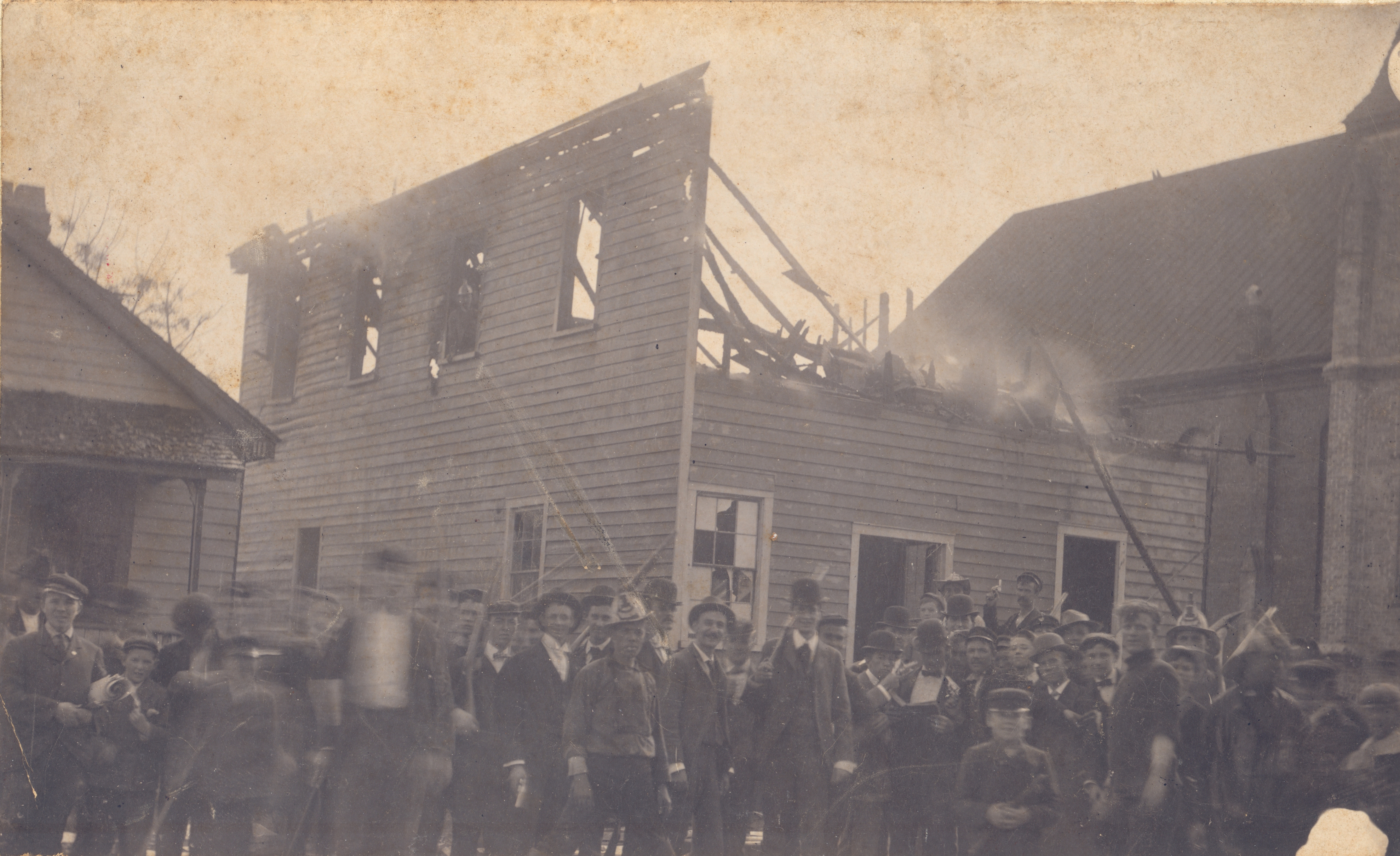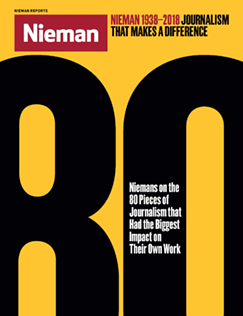
White rioters in 1898 stand in front of the burning offices of The Daily Record, a black-owned newspaper in North Carolina
Having grown up in North Carolina and required as a child to learn the history of my state, I couldn’t help but be horrified upon learning of a bloody, national event left out of my schoolbooks.
In 2006 I was living in California when my Nieman friend, Melanie Sill (NF ’94), then editor and senior vice president of The News & Observer in Raleigh, told me about the special supplement the paper had printed in November, as had The Charlotte Observer. It was called “The Ghosts of 1898: Wilmington’s Race Riot and the Rise of White Supremacy,” by historian Timothy B. Tyson.
It recounted the truth about the events of Nov. 10, 1898. The local citizens of what was then the state’s largest city, with its abundance of successful black businesspeople, hadn’t “rioted.” They were the target of the powerful white establishment in North Carolina, including newspapers, which launched a statewide propaganda campaign. Sustained vitriolic rhetoric and fearmongering in newspapers led a mob to burn down a black-owned newspaper, murder African-Americans, and overthrow Wilmington’s city government. It was a coup d’etat in the United States, the only successful one historians cite in our country’s history.
The massacre solidified segregation and fueled the Jim Crow movement. As the “Ghosts” special report says, The News & Observer’s publisher then, Josephus Daniels, heralded the ascension of “the party of the White Man,” and the massacre marked a turning point.
I make sure my news literacy students at Wake Forest University see this special report. I want them to know how the press can go horribly astray—not just in places like Rwanda in the hours before the genocide—but in the United States. “The Ghosts of 1898” presents a case of democracy betrayed, leaving newspapers over a century later apologizing for their sins.


